Quick Links
Apple gave the 24-inch iMac, first redesigned in 2021, an upgrade to the M3 chipset earlier this month. Soon after, it dispelled talk of a new 27-inch iMac by publicly commenting on product strategy in a rare move by Apple. All that has led many to believe that the iMac category might be losing its direction, or perhaps even dying. It’s easy to see why that narrative exists. The iMac is now the only Apple Silicon desktop that can only be configured with a base M3 chip. Even the tiny and affordable Mac mini has an optional ‘Pro’ chip upgrade.
But if you think the iMac (M3, 2023) is anything but a great all-in-one computer, you’re probably looking at it wrong. It’s a computer that offers unparalleled value, a stunning design, and now Apple’s newest M3 chip. That makes it perfect for small business owners, casual home users, and certainly the education market. Even professionals with light-to-moderate performance demands can make use of the iMac, and I’ve ditched my Mac Studio for it as a result. For all these reasons, it’s clear the iMac isn’t dying. It’s alive and well, still serving as the best desktop computer for most Mac users.
About this review: This review was written after a week of using an M3 iMac purchased by the writer. Apple did not have input in this article, and did not see its contents before publishing.

24-inch iMac (M3, 2023)
Great all-in-one computer
It’s still the best Mac for most people
$1234 $1299 Save $65
Apple’s refreshed 24-inch iMac keeps the stunning design of the 2021 version while upgrading the internals. There’s a new M3 chip, better connectivity options, and a capable DAC. However, it still can only be configured with the base M3 chip, which has its limitations.
Brand
Apple
CPU
Apple M3 (8-core)
Graphics
Integrated 8-core or 10-core GPU
Memory
8GB, 16GB, 24GB
Storage
256GB, 512GB, 1TB, 2TB
Ports
2x Thunderbolt 4, 3.5mm headphone jack, Gigabit Ethernet, 2x USB 3
Display
23.5-inch 4.5K Retina display, 4480 x 2520p, 218ppi, 500 nits
Operating System
macOS Sonoma
Dimension
21.5 x 18.1 x 14.7 inches (54.7 x 46.1 x 14.7cm)
Weight
9.75 pounds (4.43kg)
Price
$1,299
Pros
- Ultra-thin design and 4.5K display panel
- M3 chip is very capable
- Plenty of USB-C ports for peripherals and adapters
Cons
- You’ll probably want to upgrade the specs to a mid-tier configuration
- Comes with Lightning accessories
- The stand leaves a bit to be desired
Pricing and availability
Apple announced the new M3 iMac at its ‘Scary fast’ event Oct. 30. It became available in early November, and you can get it now at Apple, Best Buy, and other third-party retailers. The iMac starts at $1,299, but students and educators can save with Apple’s education discounts. You can choose from seven colors: blue, green, pink, silver, yellow, orange, and purple. However, only the first four colors listed are available with the base-model configuration.
The base model configuration features the M3 chip (8-core CPU, 8-core GPU), 8GB of unified memory, and 256GB of SSD storage. My personal unit was configured to include the M3 chip with a 10-core GPU, 16GB of unified memory, and 512GB of SSD storage. For that model, you’ll have to pay $1,900 before any discounts.
Design
The unchanged appearance still holds up in 2023
People seemed to be disappointed with the iMac update, since Apple didn’t change the computer at all on the outside. However, the 24-inch iMac is still one of the best-looking AiO computers you can buy. To that end, Apple has made the computer so thin that you might mistake it for just a monitor if you didn’t know better. The main display and computing panel of the iMac is only 11.5mm, which is impressively thin. Apple isn’t playing the classic Windows all-in-one trick here — hiding the computer’s internals in the stand — but it has taken a clever approach. The computer is hidden in the iMac’s chin, which allows it to be so thin.
Apple has made the computer so thin that you might mistake it for just a monitor if you didn’t know better
Tricks or not, the iMac looks stunning and modern in 2023. I’m not really sure what Apple could do to refine the iMac’s design aside from slimming the bezels all around. There’s no real way to do that without increasing costs or thickness, so I understand why the 24-inch iMac still looks the same.

Before trying out the 24-inch iMac, I was extremely skeptical about the white bezels that surround the screen. I prefer black bezels, and thought I would find the white ones on the M3 iMac distracting. Luckily, that wasn’t an issue as I barely noticed the white bezels on the iMac. It blends in nicely with the iMac color you chose, which is going to look like a subdued pastel color on the front. On the back, you’re going to find a much deeper version of that color. The iMac’s more recent color options are awesome, and they invoke similarities to the colorful iMac G3 models that sparked the product’s initial success.
macOS is great, and it matches your iMac
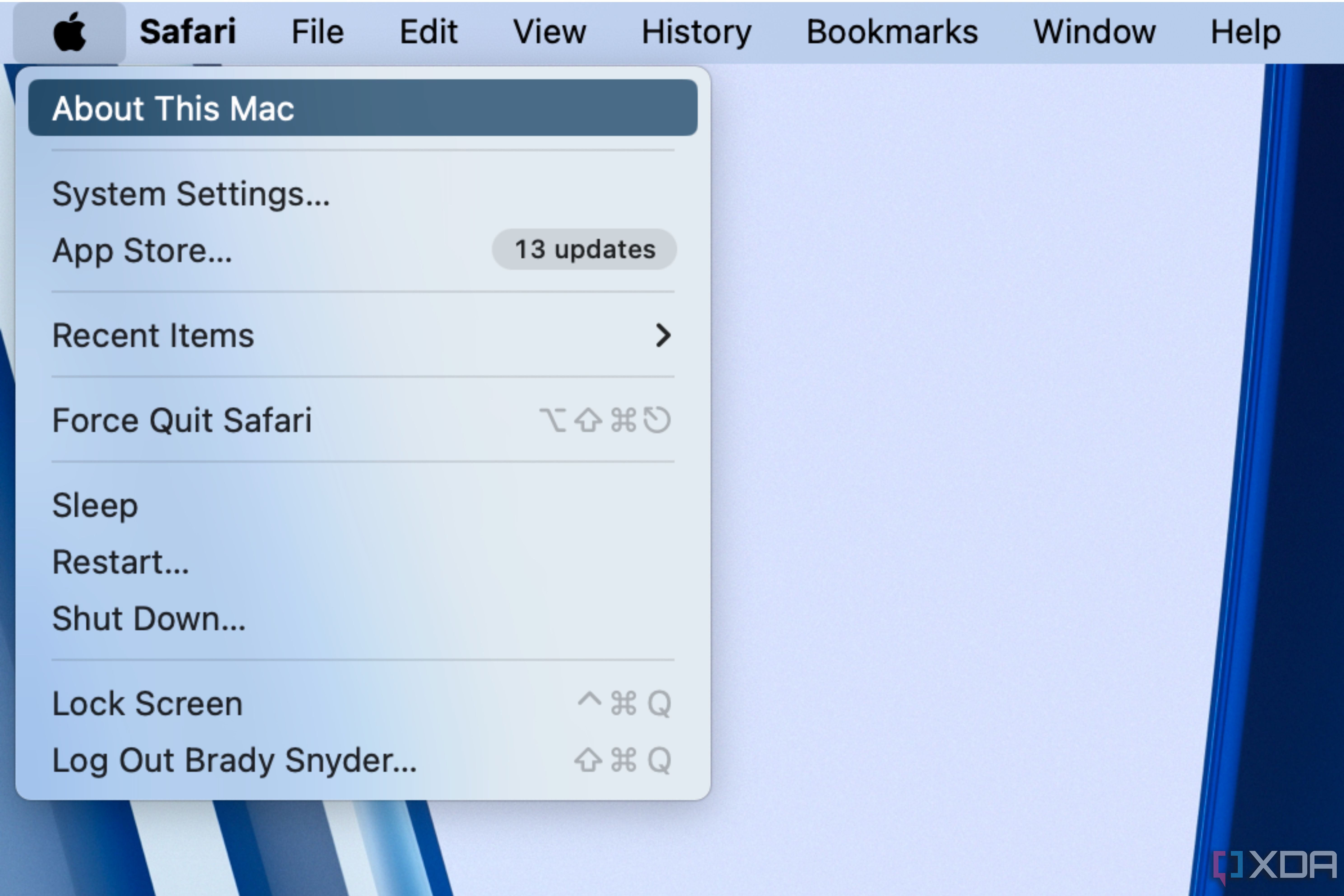
The iMac runs macOS Sonoma, and it’s generally a fantastic operating system with features for casual users and power users alike. For more on macOS Sonoma, you can read our Apple Editor Mahmoud’s full review here. But the reason I’m bringing it up in the design section is that the system accent colors on macOS actually match the color of your iMac. In the screenshot above, you can see that the macOS accent color looks just like the one on the back of my blue iMac. It’s a really nice touch, and it emphasizes how far Apple has gone to make the iMac feel like a polished all-in-one system.
Ports
Just make them all Thunderbolt, Apple
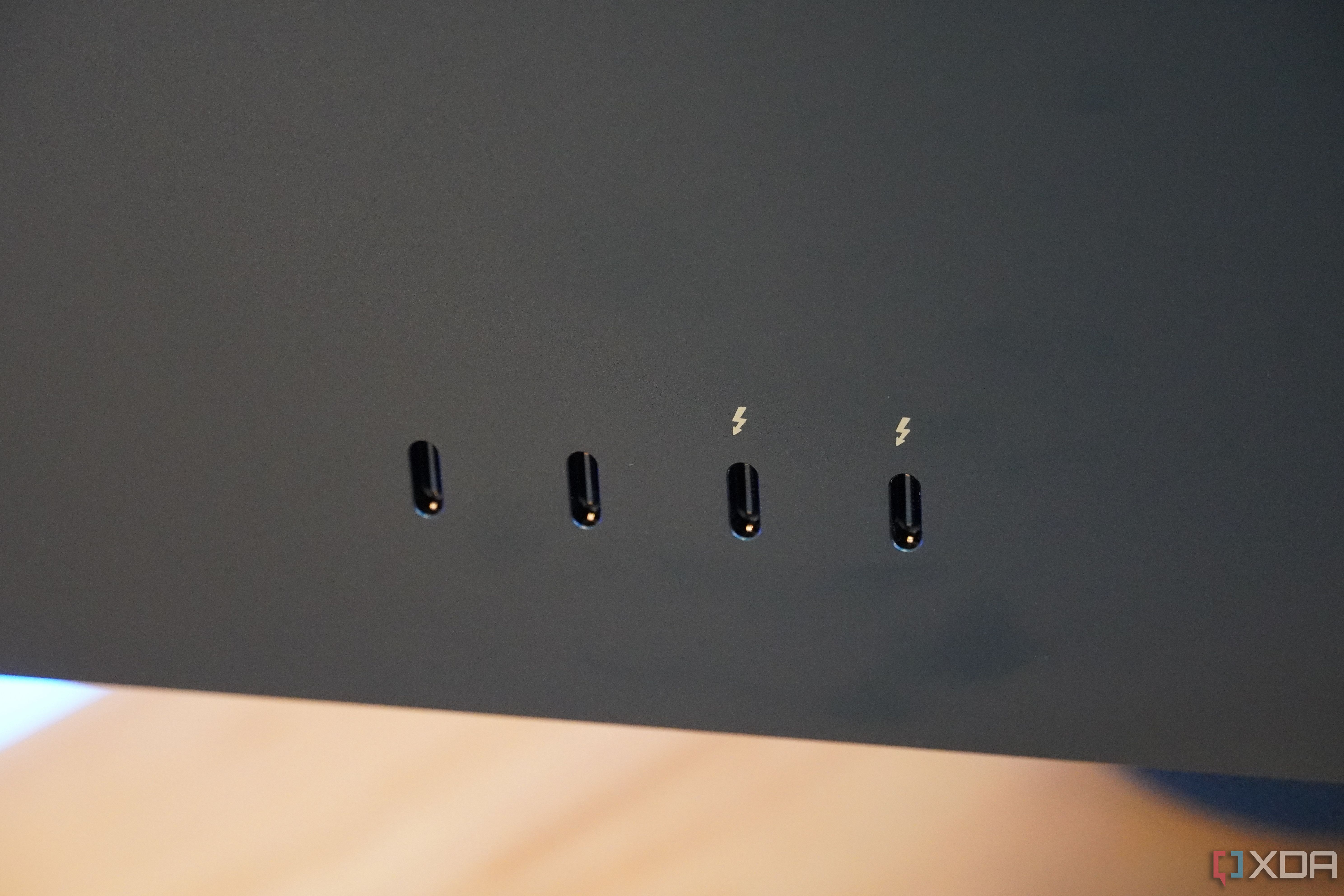
A considerable downgrade on the iMac from Apple’s professional computers comes in the way of ports. While models like the MacBook Pro and the Mac Studio have dedicated ports for SD and HDMI, there are just USB-C ports here. Unfortunately, only two of these ports are Thunderbolt 4, and the rest are just USB-C. I would have liked to see these all be Thunderbolt, but it probably won’t matter much. The iMac can still only work with one external display, so there may not be many accessories that will require Thunderbolt that you’ll use with this computer.
The base model of the M3 iMac only has two Thunderbolt ports, with no extra USB-C ports.
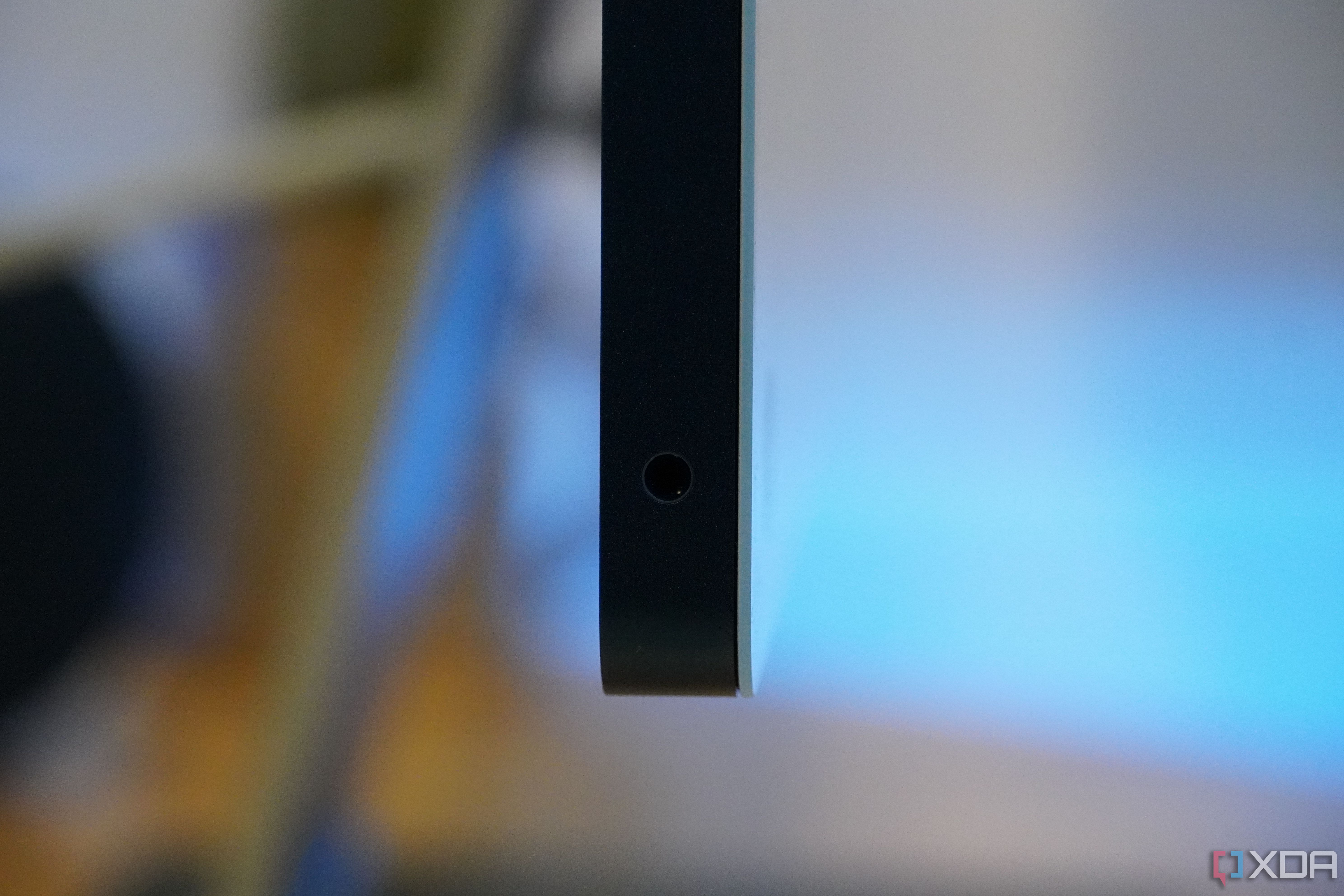
The only other port you’ll find on the iMac is the 3.5mm headphone jack, and this is stashed on the left side of the display panel. It’s one of the few areas where Apple actually made changes, as the iMac’s digital-to-analog converter (DAC) got a pretty solid upgrade. It can now power headphones with an impedance of up to 1,000 ohms, and this might mean you won’t need an external amplifier for more power-hungry headphones.
Mouse and keyboard
The keyboard is excellent, but the mouse is lacking
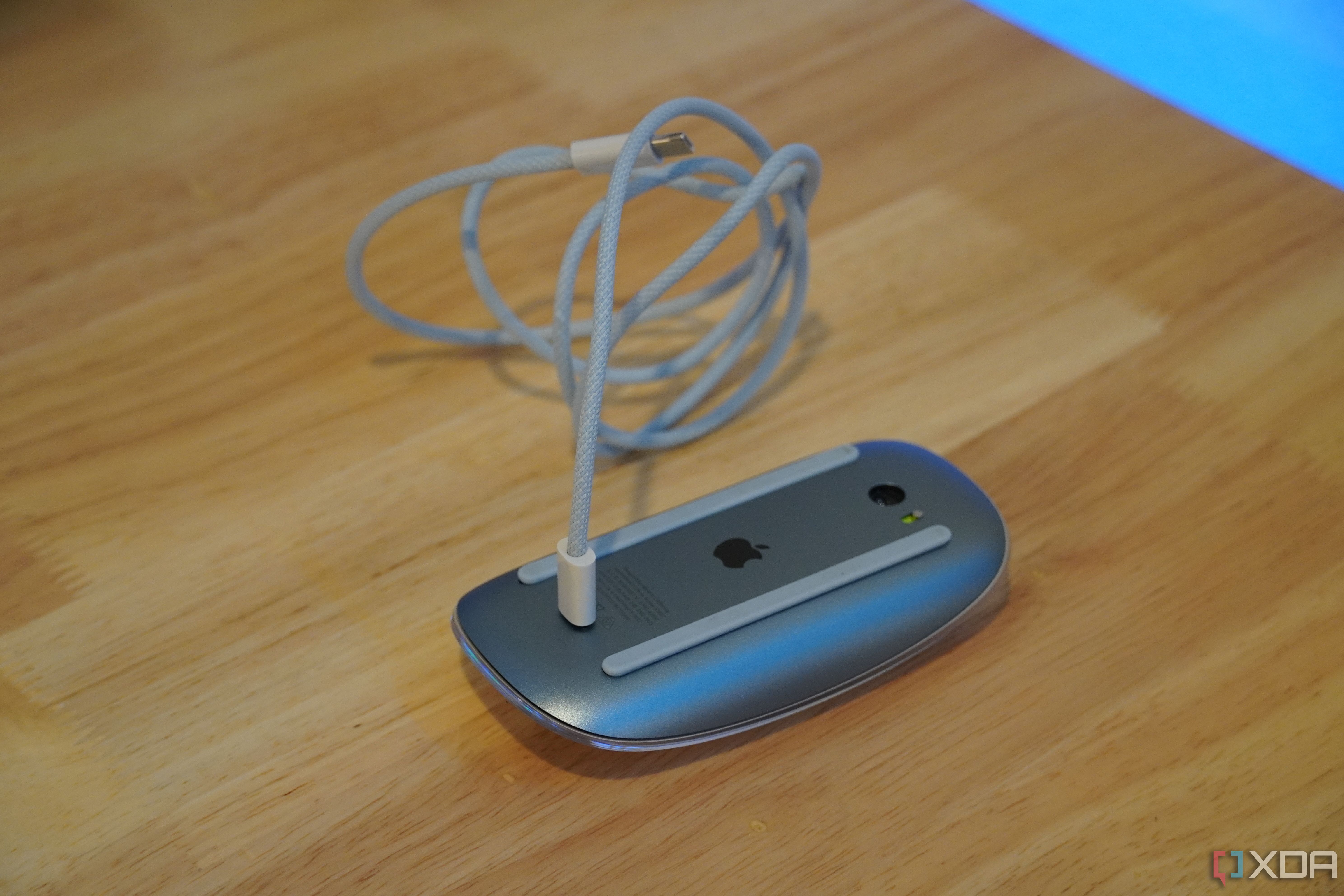
A big part of the appeal of an iMac is that you get everything included with the device, such as a mouse and keyboard. Surprisingly, Apple didn’t update its Magic Mouse or Magic Keyboard to USB-C, and that’s a shame. The Magic Mouse is still an ergonomic nightmare that you have to flip over just for charging. Really, the only benefit is that the Magic Mouse’s surface essentially functions as a touchpad. It’s intended for use with gestures, combining a mouse and trackpad in one device. But in practice, the experience is finicky at best. I didn’t even make it through the review period before replacing the Magic Mouse with one that’s more ergonomic and has a scroll wheel.
The Magic Mouse is still an ergonomic nightmare that you have to flip over just for charging.
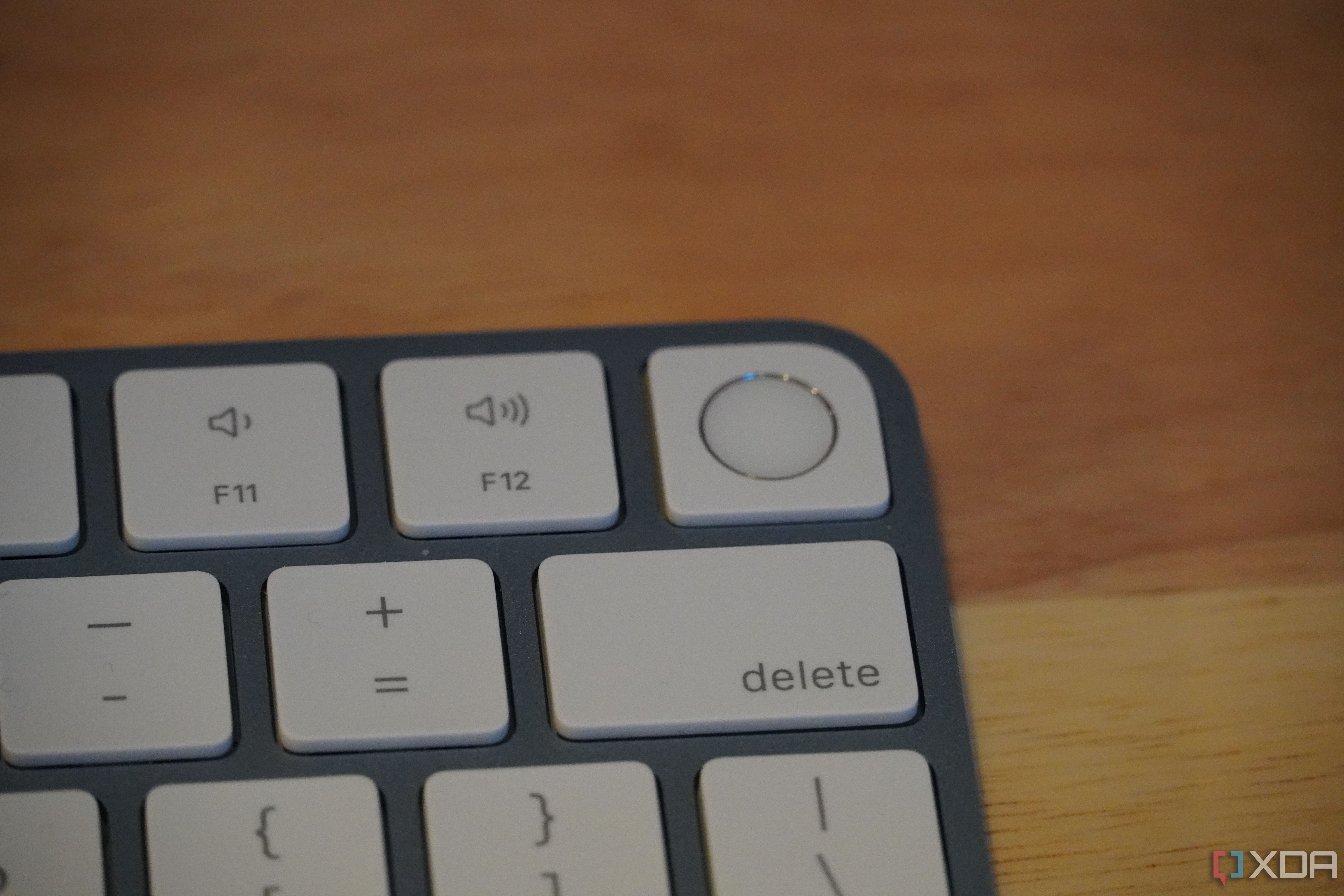
On the other hand, the Magic Keyboard that comes with the 24-inch iMac is excellent. It’s a lot like the keyboards you’d find on a MacBook, which is great for people who like medium travel keyboards. Personally, I hate having to adjust to different key travel levels between devices, so having consistent keyboards at my desk and on the go is a big perk. Touch ID is also a game-changer here, as it really makes a difference when unlocking your device and authenticating system actions. Normally, I’d use the Logitech MX Keys with my Mac, but Touch ID on the Magic Keyboard is enough to keep me using the default option. However, it’s worth noting that Touch ID isn’t included in the base model by default. It’s a $50 upgrade, or you can get at no additional cost it if you choose to get the 10-core GPU model.
Display
Great for the price, but missing a few modern features
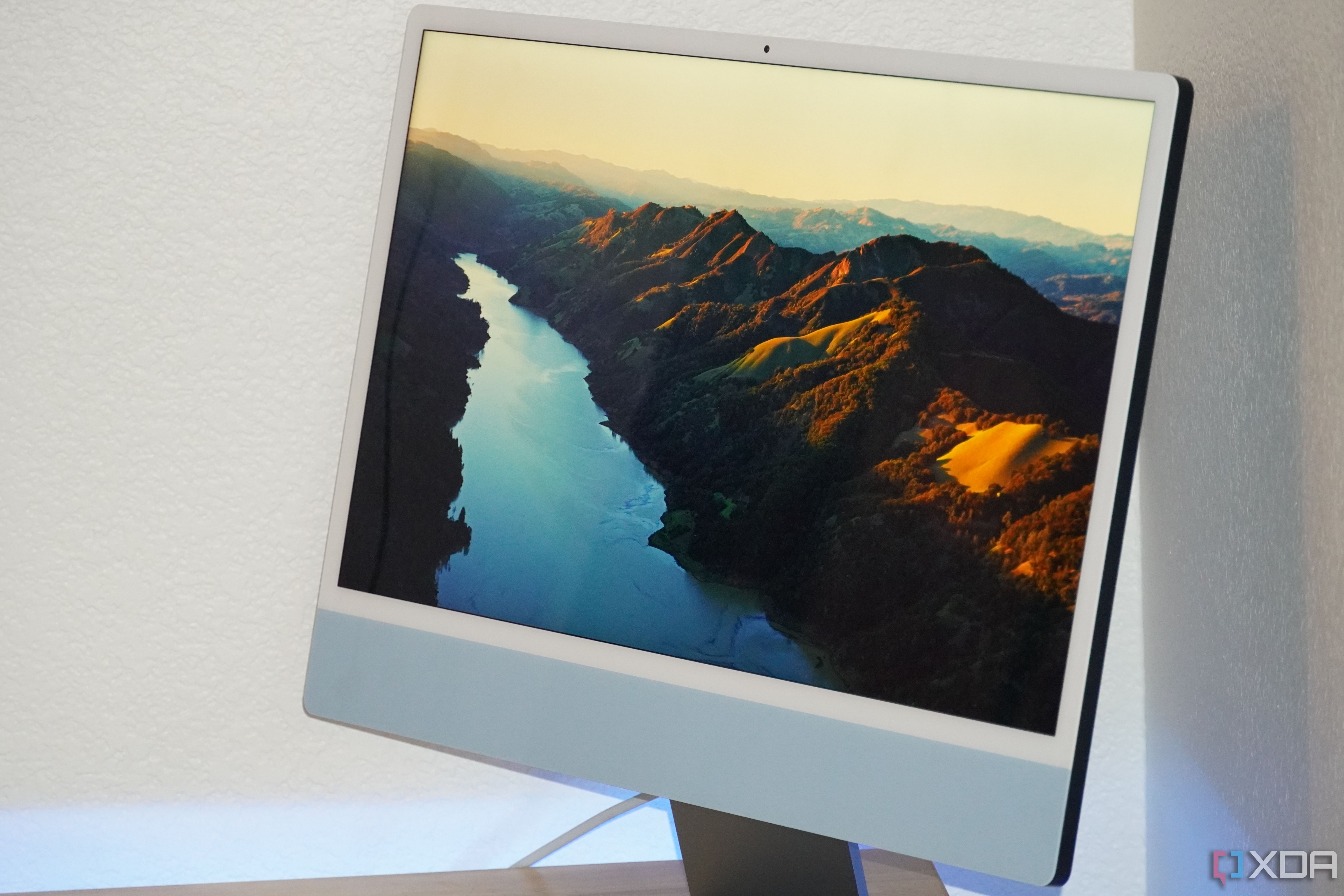
The display is perhaps the best part of the iMac, and it’s part of what makes the computer such a great value. You get a 4.5K display with an exact resolution of 4480×2520 and 500 nits of brightness. The actual size of the display panel is 23.5 inches, which some have criticized as being too small. In my experience, the display was large enough to comfortably have two windows open at once. If you need more than that, you can always open more than one desktop and switch between them for more space. People who are coming from a 27-inch monitor or iMac might find this screen to be a bit cramped, but all others should be fine with the iMac’s screen size.
The iMac’s display is what makes this computer a steal
Apple says that the iMac supports a billion colors, and it can also be connected to an external display at up to 6K resolution and 60Hz. The external display limitation is a bit disappointing, but I don’t see it being much of an issue on this particular computer. The iMac is best as an all-in-one system, and you should buy other Macs if you plan to use multiple external displays.

Aside from Apple’s claim of supporting a billion colors, it also says that the iMac supports the full P3 color gamut. Our tests seemed to support that claim, with the iMac supporting 100% of the sRGB and 99% of the P3 color gamuts. Color accuracy was worse in the NTSC and AdobeRGB profiles, with the iMac supporting 86% and 88% of those colors, respectively.
There are a few downsides to the display, though. Most notably, the iMac doesn’t support local dimming zones for its backlight, which means dark colors don’t look great. The iMac also uses fairly old display technology even though it has a high resolution panel. But overall, the iMac’s display is what makes this computer a steal. To get a 4K or higher resolution display on its own would cost a few hundred dollars, and this 4.5K display is included with the iMac. Plus, you get an incredibly powerful computer, which we’ll get to next.

The iMac also makes sense for a video conferencing machine, as it has excellent speakers. It sounds way more full and room-filling than it should for the iMac’s size, and it’s the best of Apple’s inbuilt computer speakers. The webcam is also a solid, 1080p sensor that is good enough to make me not feel the need to use Continuity Camera. For sound input, there’s a three-microphone array as well.
Performance
More than enough for casual and moderate demands
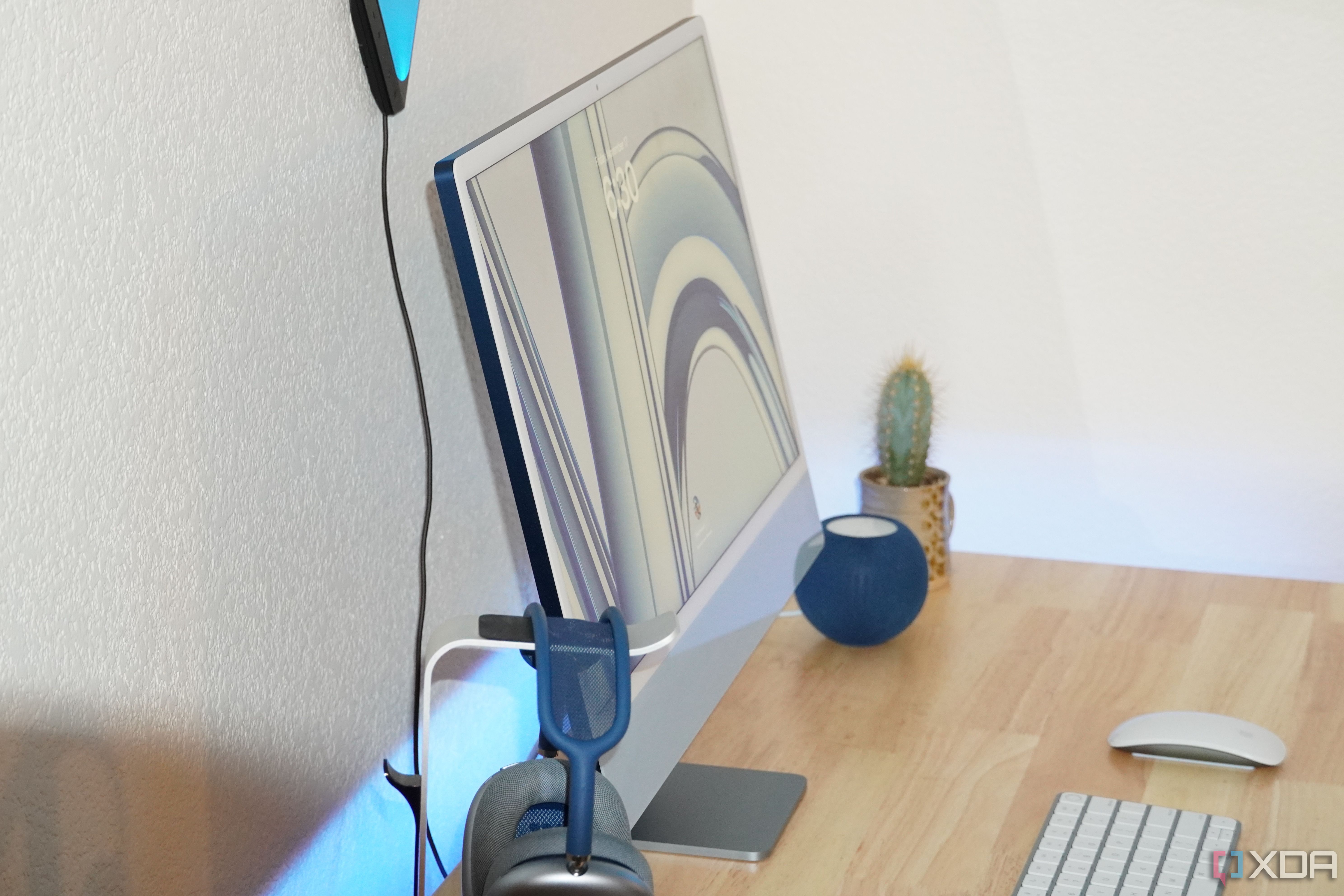
The M3 iMac is plenty powerful, and I’m here to dispel any doubts about the iMac’s performance capabilities. Although the iMac features a base M3 chip — you can’t get an M3 Pro or M3 Max in this computer — Apple has seriously improved its base model processors. In fact, I’m trading in my M1 Max Mac Studio (2022) for this machine. That’s because the base M3 chip is actually competitive with Apple’s upgraded M1 Max chip that debuted in the Mac Studio in early 2022. This M1 Max chip is over a year old now, but I don’t think you’ll find many people who think that M1 Max systems are underpowered or obsolete in 2023.
I ran a few benchmarks, comparing the M3 iMac to my aforementioned Mac Studio and an M2 MacBook Air for reference. You’ll be shocked by how competitive the M3 iMac can get with the Mac Studio, a computer that was expressly targeted at professionals and creatives just last year.
| 2,975/11,863 |
3,288/139/613 |
1,761/1,647/2,070/1,326 |
| 2,636/9,992 |
1,534/121/564 |
1,500/1,403/1,749/1,158 |
| 2,423/12,513 |
3,588/112/828 |
1,598/1,401/2,008/1,199 |
If you’re doing graphics-heavy work, you’d probably still be better off with an M2 Max or M2 Ultra Mac Studio, or an M3 Pro or M3 Max MacBook Pro. Even my unit with an upgraded 10-core GPU, and Apple’s new hardware-accelerated ray tracing tech, couldn’t beat my M1 Max Mac Studio in graphical tests. However, for most casual and productivity use cases, the M3 chip in the iMac can absolutely hang with other modern systems. The iMac beat the M1 Max Mac Studio pretty handily in single-core benchmarks, and it nearly nabbed the Mac Studio in multi-core performance.
All these are just synthetic benchmark tests, but it tracks with my experience using the iMac daily. I did everything that I typically would on my outgoing Mac Studio on the new M3 iMac without issue. That includes photo and color editing, content creation, and web browsing. I don’t often video edit or utilize graphics-heavy apps, but I think my performance needs probably match a lot of prospective iMac buyers.
You’d be hard-pressed to find a computer with this much power, at this price point, with all these other amenities included other than the M3 iMac
Things like casual web browsing, general productivity work, and video streaming are the most likely uses for a computer like the iMac. For these types of tasks, the M3 iMac provides more than enough power. I’d consider my workload moderate, but my M3 iMac wasn’t a downgrade at all from my M1 Max Studio. You’d be hard-pressed to find a computer with this much power, at this price point, with all these other amenities included other than the M3 iMac.
Should you buy the iMac (M3, 2023)?
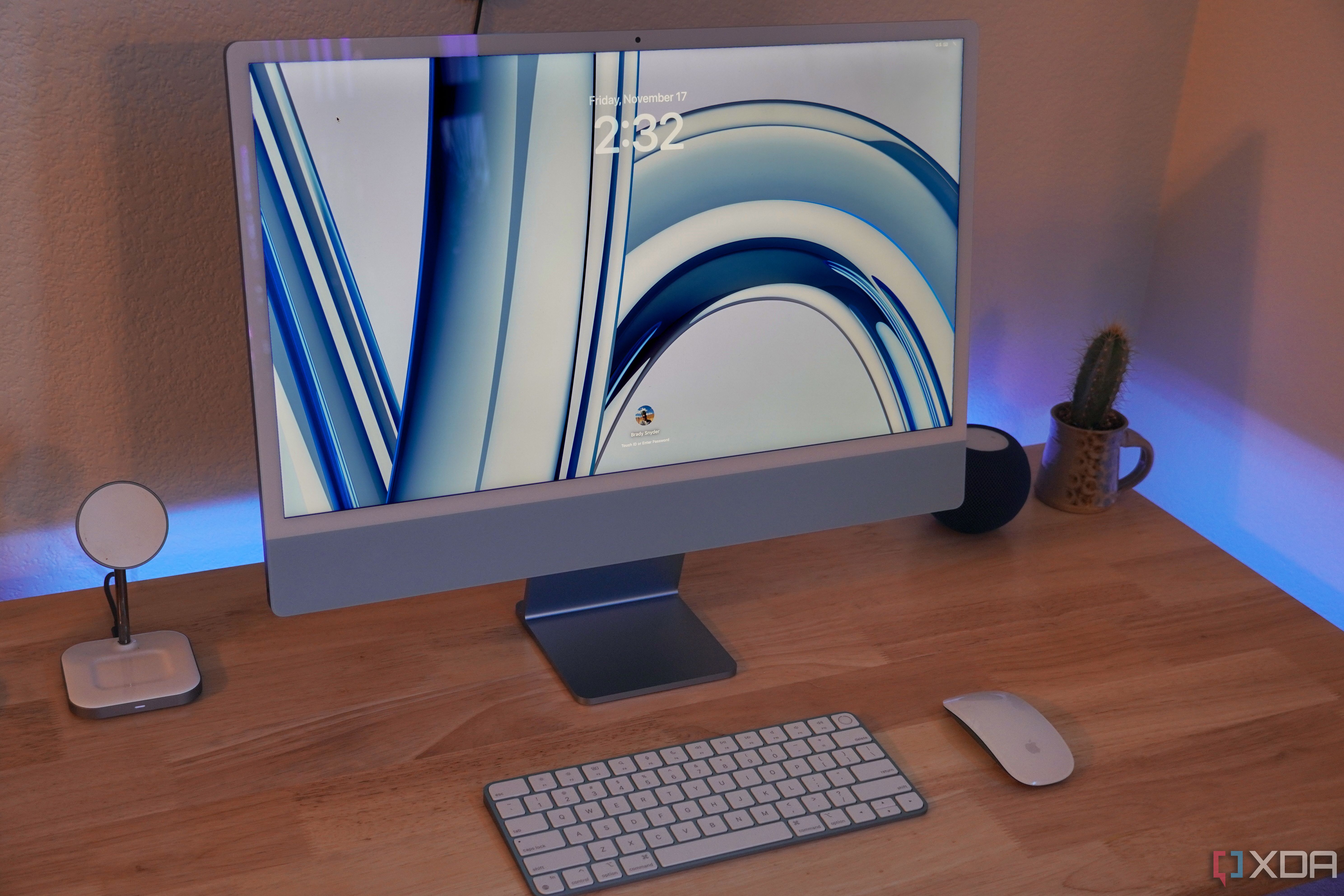
You should buy the iMac (M3, 2023) if:
- You want an all-in-one Mac
- You use your Mac for casual and moderate workloads
- You don’t want to buy a monitor and peripherals separately
You should NOT buy the iMac (M3, 2023) if:
- You have a graphics-heavy workload
- You already have a monitor and peripherals
The state of the iMac product line is wildly blown out of proportion. You still get a great all-in-one computer with a 4.5K display, an M3 system-on-a-chip, and decent peripherals included starting at just $1,300. That makes it an insane value, even if the base model is only fit for casual users. The configuration I chose, which is good enough to rival my M1 Max Mac Studio, can still be had for under $2,000. There’s a Mac user out there that wants a simplified but powerful desktop experience, and the 24-inch iMac is the perfect solution for those needs.
It’s true that the 24-inch iMac isn’t feasible for demanding graphical workflows and power users who need the utmost performance. However, the iMac was never intended to serve those users. During the Intel era, the iMac and iMac Pro filled that gap because there was nothing else to choose from. Now that the mid-tier Mac mini and Mac Studio exist, the iMac doesn’t have to be a computer for demanding workflows. All it has to do is meet the needs of casual and moderate users to be successful. If my experience with the M3 iMac is any indication, for that purpose, the storied all-in-one is still alive and well.
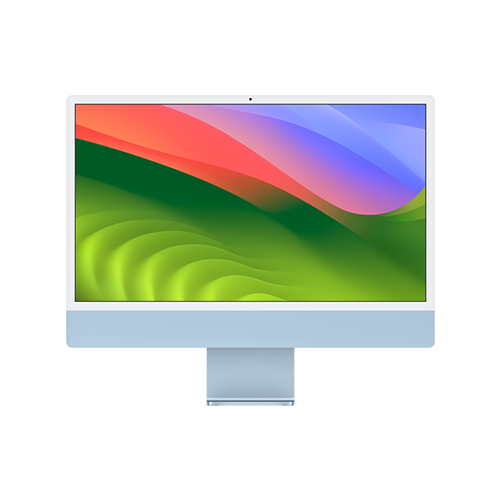
24-inch iMac (M3, 2023)
Great all-in-one computer
It’s still the best Mac for most people
$1234 $1299 Save $65
2023’s 24-inch iMac receives a notable processor bump from Apple M1 to M3, along with Wi-Fi and Bluetooth upgrades. It retains the same exterior design and color options of its 2021 predecessor.
** (Disclaimer: This video content is intended for educational and informational purposes only) **
More...

